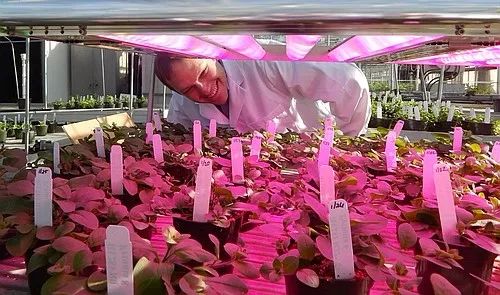If tomatoes, cucumbers, etc. get enough water, and most importantly enough natural light, they will grow very well.
But for LEDs, plant cultivation under artificial light is an interesting new application. These tiny light sources prove once again that they are definitely not a simple retrofit for halogen and energy-saving lamps.
Each LED lighting solution personalizes the product: from the cost-effectiveness of consumer applications, the high color quality of commercial lighting, to the durability of an all-weather system.
In this article, we use several examples to illustrate the most important principles to be followed in the development of a target product.
The cultivation of plants under artificial light sources has long been of widespread interest in the industry, not only because of the limited urban space, but also because of the conditions under which plant growth can be controlled.
The horticultural industry's interest has increased significantly as it has been found that the growth rate of flowers and fruits can vary depending on the spectrum provided to the plants. Imagine how many flowers you need to cultivate on Valentine's Day, or imagine the pressure on suppliers to supply fresh fruits and vegetables to supermarkets according to the agreed time.
Together with the horticulture industry and universities, OSRAM Opto Semiconductors and other major lighting manufacturers have investigated how light affects different plants.
We now know that green plants basically use blue light (about 430 to 490 nm) and red light (about 640 to 780 nm), mainly for photosynthesis, so they are used to generate energy, but there are other absorption bands, such as the infrared range of about 730 nm (see Figure 1), this range controls plant growth and more.

Figure 1 Light absorption of plants
Proper mixing, coupled with the temporary addition of certain wavelengths appropriate to the individual needs of the plant, can trigger the desired effect. LEDs are particularly well suited for this application due to the defined flexibility of chromatography and control.
For optimum plant growth, illumination in the above wavelength range must be provided and does not need to have an overall white appearance. If these parameters are correctly performed, the plants can be cultivated in an enclosed space under artificial light, away from wind and rain.
At the same time, all-round illumination means that plants consume less energy in vertical growth, otherwise they need to look for sunlight. Instead, they grow more out and produce more. Creating a good environment for plants poses a challenge to luminaires and LEDs.
Since sprinkler systems used in commercial greenhouses produce high humidity, LEDs should be environmentally affected or protected. Chemicals or ash layers contaminated with fertilizers or pesticides may also penetrate into LED luminaires.

Figure 2 Red light and blue light have a positive impact on plant growth
â— Important parameters for product development: stability and output
From this and other application areas, targeted product development can be carried out based on many details such as lumen packaging, light quality and package size.
The LED package is essentially different in two parameters, the output level and "stability." The "stability" of LED components includes not only enhanced reliability, but also the operating temperature and environmental parameters required for a particular application.
LEDs with low stability can have a very long lifetime, but only under moderate conditions. Higher stability means more complex, more expensive materials, more complex processes, and therefore higher costs. Therefore, in most cases, components should be selected based on the stability of the particular application of the LED.
The output level or the amount of light emitted by each package is another key factor. A large number of individual small lumen packaged LEDs are used in linear or panel luminaires. In applications requiring directional light or even specific distribution of light, a large lumen package is used, which is more suitable as a "point source" for secondary optics. In the middle, there are a series of classic lamps and luminaires that achieve the standard luminous flux of previous incandescent lamps with a small amount of medium-range lumens or a large lumen package.
â— Choose the right LED for your application
Experience has shown that many LEDs optimized for specific applications can be used very successfully in other areas with little or no modification.
In order to define a suitable LED package in all areas of general illumination, it is necessary to distinguish between output level and package stability. However, technological innovations and improvements already established in the LED market cannot be ignored.
New applications such as horticultural lighting are presenting product developers with new challenges they have to overcome. The above results show that although appropriate LEDs exist for almost all established applications, this does not preclude the possibility of more suitable LEDs in the future, or areas that have not been considered so far.
N type cable assemblies wridely use in many kinds equipment, skilled operation and speical technology test. Such as LMR Series Cable and RG58, RG178.
N connector
Xi'an KNT Scien-tech Co., Ltd , https://www.honorconnector.com